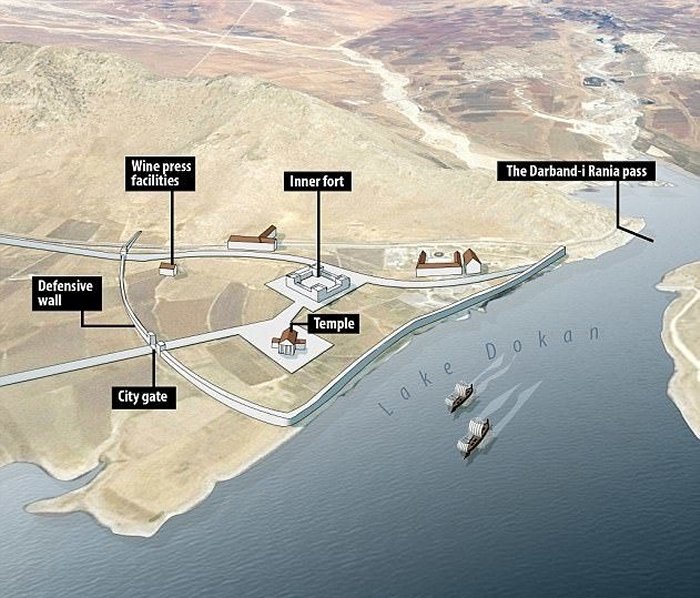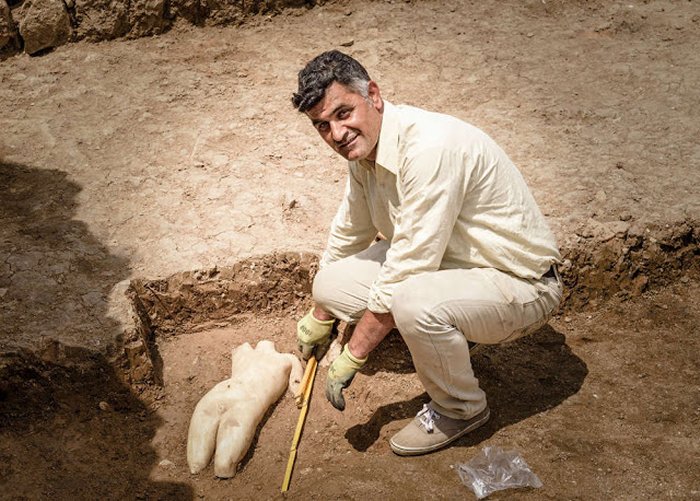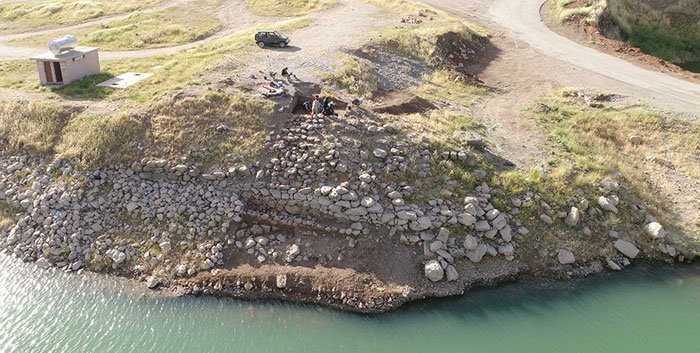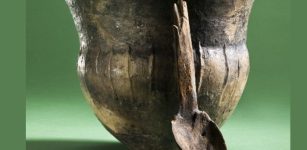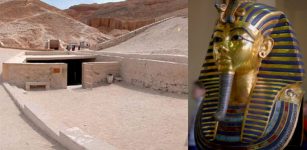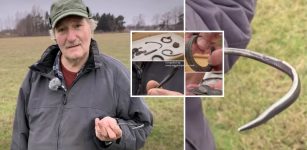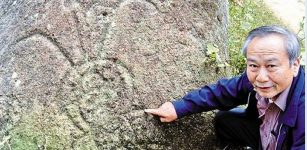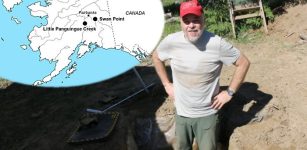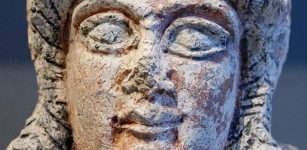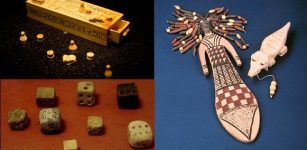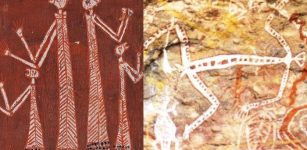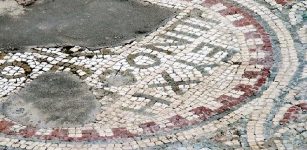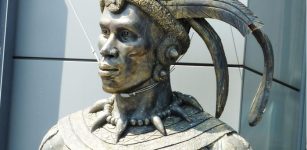Lost City Of Alexander The Great Found After 2,000 Years In Iraq
AncientPages.com - The location of Alexander the Great’s city has been an unsolved mystery for 2,000 years.
Now, archaeologists report they have uncovered the lost city of Alexander the Great in Northern Iraq. Researchers from the British Museum made the discovery when they were reviewing declassified American spy footage obtained by drones during the 1960s Corona Project.
A graphic of what the 'lost city' would have looked like, with a temple, inner fort and wine press facilities Image Credit: Leo Delauncey
Examination of images taken over the area has revealed remains of a settlement, known as Qalatga Darband. A closer investigation of the processed images shows outlines of a large building hidden beneath grain fields. One square building is possibly an ancient fort—on the banks of Lake Dokan. Ground inspections uncovered limestone blocks that may have served as part of an oil or wine press.
A marble statue of a nude male was found at the site. Image credit: British Museum
Alexander the Great, the Greek King of Macedon and ruler of one of the largest empires in the ancient world was not only a military genius but also a cultural innovator. His military campaigns brought the Greek language, literature, art, aesthetics, education, and athletics to every part of his empire.
The unearthing of what really seems to be his ancient lost city is one of the greatest archaeological discoveries in recent years.
"The drone yielded excellent information. We got coverage of all the site using the drone in the spring – analyzing crop marks hasn't been done at all in Mesopotamian archaeology. Where there are walls underground, the wheat and barley don't grow so well, so there are color differences in the crop growth," lead archaeologist John MacGinnis said.
The first evidence of a lost city came when archaeologists were sifting through spy satellite photos taken for the American military in the 1960s, which were declassified and made public in 1996.
Excavations in Iraq have not been easy due to safety concerns. Fortunately, security has been improved in the region and the British Museum sent a team to Darband as part of a project to train Iraqi archaeologists, who will be tasked with rescuing important sites that have been damaged by Isis.
Image credit: British Museum
Researchers have managed to establish that a city dating back to the first or second centuries BCE once lay at the site, most likely built on the route that Alexander took in 331 BC while pursuing Persian king Darius III.
See also:
How Did Alexander The Great Die?
Battle Of Gaugamela – Alexander The Great Defeats Darius III Of Persia – On Oct 1, 331 BC
The size, complexity and richness of the site surprised researchers. They found statues of Graeco-Roman deities and other signs of Greek influence, such as terracotta roof tiles, suggesting to them that Alexander and his followers had founded the city.
Various large buildings have also been found, alongside fortified walls and ancient wine presses.
The Darband-i Rania pass from the northeast: the site of Qalatga Darband is the triangular spit of land beyond the bridge on the right. Image credit: British Museum
"It's early days, but we think it would have been a bustling city on a road from Iraq to Iran. You can imagine people supplying wine to soldiers passing through," MacGinnis said.
According to Dr. Robert Cargill, an archeologist at the University of Iowa, the city guards “strategic pass between two mountain ranges that separate the ancient territories of Assyria and Media, both of which later became part of Alexander the Great’s vast empire. A naturally-defended fortress with fresh water in the mountains overlooking two strategic plains is an important site.
The age of the lost city is still unknown, but archaeologists estimate its founding to 331 BCE, the height of Alexander the Great’s conquest of the ancient Mediterranean world.
AncientPages.com
Expand for references
